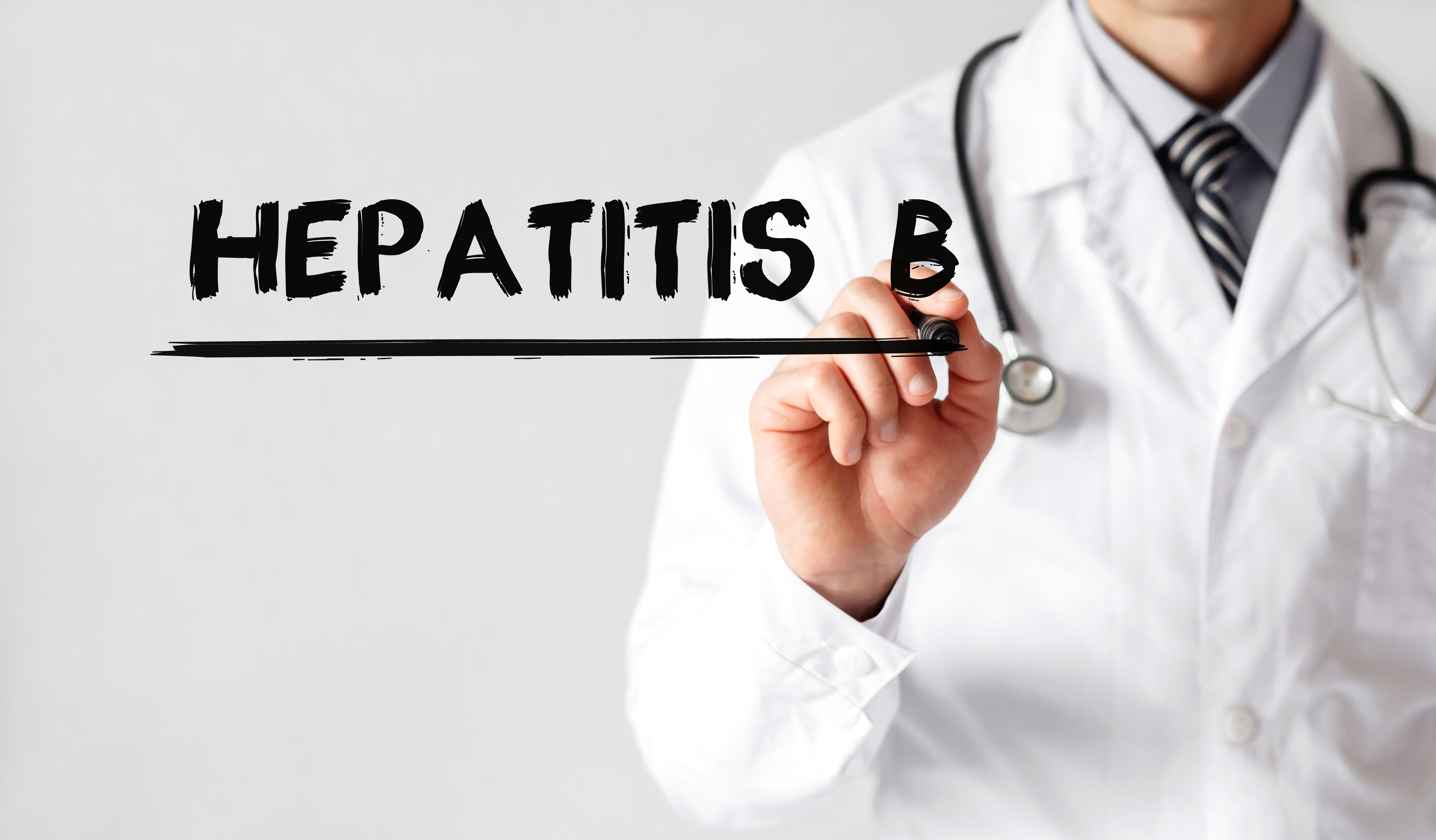Missed Hepatitis B Treatment Opportunities in the US Increase Health Risks – The American Journal of Managed Care® (AJMC®)

Report on Hepatitis B Treatment Gaps and Implications for Sustainable Development Goals
Introduction: Aligning Hepatitis B Virus (HBV) Care with SDG 3 (Good Health and Well-being)
A recent study published in JAMA Network Open reveals a significant public health challenge in the United States, where a majority of patients eligible for Hepatitis B Virus (HBV) treatment remain untreated. This gap directly impedes progress toward Sustainable Development Goal 3, particularly Target 3.3, which aims to combat hepatitis by 2030. The failure to provide necessary treatment for this communicable disease leads to preventable disease progression, including cirrhosis and hepatocellular carcinoma (HCC), undermining efforts to reduce premature mortality from non-communicable diseases as outlined in SDG Target 3.4.
Key Findings from a National Cross-Sectional Study
Overall Treatment Deficit
The cross-sectional study analyzed anonymized health records from 75.2 million patients, identifying a substantial deficit in the HBV care cascade. The findings highlight a failure to achieve universal access to essential medicines and healthcare services, a cornerstone of SDG Target 3.8.
- Out of 14,693 individuals with available laboratory data, 8,594 were identified as eligible for HBV treatment based on established clinical guidelines.
- Only 2,134 of these eligible patients (24.8%) received a prescription for treatment.
- Even among patients with the clearest indications for therapy—cirrhosis, decompensation, or advanced fibrosis—approximately 40% remained untreated, representing a critical missed opportunity for intervention.
Disparities Undermining SDG 10 (Reduced Inequalities) and SDG 5 (Gender Equality)
The study uncovered significant inequalities in treatment administration across demographic groups, highlighting systemic barriers that conflict with the principles of SDG 10 (Reduced Inequalities) and SDG 5 (Gender Equality).
- Gender Disparity (SDG 5): Female patients had significantly lower odds of receiving treatment compared to male patients (Odds Ratio [OR], 0.67).
- Racial Disparities (SDG 10): Compared to Asian patients, the odds of receiving treatment were substantially lower for:
- Black patients (OR, 0.66)
- White patients (OR, 0.80)
- Patients of unknown or other race (OR, 0.72)
- Age-Related Disparities (SDG 10): Older age was associated with greater odds of treatment, with patients over 65 being more likely to receive care (OR, 1.51) than younger cohorts.
Specific Challenges to SDG Targets
Gaps in Maternal Health and Prevention of Mother-to-Child Transmission (SDG 3 & SDG 5)
The analysis of women of childbearing age (18-44 years) revealed alarming trends that threaten maternal health and child well-being, core components of SDG 3 and SDG 5. The low treatment rates in this demographic represent a failure to implement safe and effective measures to prevent mother-to-child transmission (MTCT) of HBV.
- Racial and ethnic disparities were even more pronounced in this subgroup, with Black (OR, 0.42) and White (OR, 0.47) women having less than half the odds of receiving treatment compared to their Asian counterparts.
- These findings indicate a critical gap in preventative healthcare that directly impacts the health of future generations, a key consideration for sustainable development.
Recommendations and Path Forward
Strategic Interventions to Achieve SDG Targets
The study’s findings underscore the urgent need for targeted actions to close the HBV treatment gap and address health inequalities. Achieving the 2030 Agenda for Sustainable Development requires a concerted effort to improve healthcare delivery and ensure equitable access for all populations.
- Enhance Clinician Education: Promote comprehensive education for healthcare providers on current HBV management guidelines to ensure timely identification and treatment of all eligible patients, in line with SDG 3.
- Develop Targeted Interventions: Design and implement interventions specifically aimed at eliminating the observed gender and racial disparities in HBV care, directly addressing the goals of SDG 5 and SDG 10.
- Strengthen Public Health Systems: Bolster public health infrastructure to improve the HBV care cascade, with a particular focus on preventing MTCT and reducing the long-term burden of HBV-related liver disease.
Analysis of Sustainable Development Goals in the Article
1. Which SDGs are addressed or connected to the issues highlighted in the article?
-
SDG 3: Good Health and Well-being
The article’s central theme is the significant gap in treatment for Hepatitis B virus (HBV), a major public health issue. It discusses disease progression, mortality rates, and the risk of developing severe conditions like cirrhosis and hepatocellular carcinoma, all of which are core concerns of SDG 3.
-
SDG 10: Reduced Inequalities
The article explicitly highlights disparities in healthcare access and treatment. The section titled “Disparities Persist in HBV Treatment Across Age, Sex, and Race” provides detailed data showing that treatment rates and odds differ significantly among racial groups (Asian, Black, White patients), between sexes, and across different age brackets, directly addressing the goal of reducing inequalities.
-
SDG 5: Gender Equality
This goal is relevant due to the specific focus on gender-based disparities in treatment. The study found that “female patients having reduced odds of treatment compared with male patients.” Furthermore, it analyzes women of childbearing age as a distinct subgroup, emphasizing the “missed opportunities for preventing mother-to-child transmission (MTCT),” which connects health outcomes to gender and reproductive health.
2. What specific targets under those SDGs can be identified based on the article’s content?
-
SDG 3: Good Health and Well-being
- Target 3.3: By 2030, end the epidemics of AIDS, tuberculosis, malaria and neglected tropical diseases and combat hepatitis, water-borne diseases and other communicable diseases.
Explanation: The article is entirely focused on combating Hepatitis B. It highlights that “Most US patients eligible for hepatitis B virus (HBV) treatment remain untreated,” which signifies a major challenge in achieving this target. The discussion on preventing mother-to-child transmission is also a key strategy in combating the spread of hepatitis. - Target 3.4: By 2030, reduce by one third premature mortality from non-communicable diseases through prevention and treatment and promote mental health and well-being.
Explanation: The article states that untreated HBV is linked to “earlier mortality” and a “10% to 25% lifetime risk of developing hepatocellular carcinoma (HCC),” which is a non-communicable disease (cancer). Effective HBV treatment, as advocated in the article, serves as a primary prevention method for these deadly NCDs. - Target 3.8: Achieve universal health coverage, including financial risk protection, access to quality essential health-care services and access to safe, effective, quality and affordable essential medicines and vaccines for all.
Explanation: The finding that only “24.8% of eligible patients received treatment” points to a significant gap in access to essential health-care services and medicines (oral nucleoside analogues), which are described as having “long-term safety and efficacy.”
- Target 3.3: By 2030, end the epidemics of AIDS, tuberculosis, malaria and neglected tropical diseases and combat hepatitis, water-borne diseases and other communicable diseases.
-
SDG 10: Reduced Inequalities
- Target 10.2: By 2030, empower and promote the social, economic and political inclusion of all, irrespective of age, sex, disability, race, ethnicity, origin, religion or economic or other status.
Explanation: The article’s data demonstrates a lack of inclusion in health services based on race, sex, and age. For instance, it reports “lower treatment odds were observed for Black patients (OR, 0.66; 95% CI, 0.58-0.75)” compared to Asian patients, directly showing inequality in health outcomes based on race. - Target 10.3: Ensure equal opportunity and reduce inequalities of outcome, including by eliminating discriminatory policies and practices and promoting appropriate legislation, policies and action in this regard.
Explanation: The documented disparities in treatment represent an inequality of outcome. The article’s conclusion, which calls for “identification of effective interventions to address treatment disparities,” aligns with the goal of promoting action to ensure equal opportunity in healthcare.
- Target 10.2: By 2030, empower and promote the social, economic and political inclusion of all, irrespective of age, sex, disability, race, ethnicity, origin, religion or economic or other status.
-
SDG 5: Gender Equality
- Target 5.1: End all forms of discrimination against all women and girls everywhere.
Explanation: The statistical finding that “female patients having reduced odds of treatment compared with male patients (OR, 0.67; 95% CI, 0.60-0.75)” indicates a systemic disparity that disadvantages women in accessing necessary medical care, which can be interpreted as a form of inequality in the healthcare system.
- Target 5.1: End all forms of discrimination against all women and girls everywhere.
3. Are there any indicators mentioned or implied in the article that can be used to measure progress towards the identified targets?
-
For Target 3.3 (Combat hepatitis):
- Percentage of eligible patients receiving HBV treatment: The article explicitly provides this indicator, stating that only “24.8% of eligible patients received treatment” in one cohort and citing another source that found “only 29% of qualifying patients… receive treatment.” This is a direct measure of the treatment gap.
- Rate of mother-to-child transmission (MTCT) of HBV: The article implies this indicator by highlighting the prevention of MTCT as a key goal and noting that treatment gaps among women of childbearing age represent “an important gap in the prevention of negative HBV-related outcomes.”
-
For Target 3.4 (Reduce NCD mortality):
- Incidence of hepatocellular carcinoma (HCC) and cirrhosis in patients with HBV: The article mentions that treatment is effective in “reducing adverse HBV outcomes such as cirrhosis, liver decompensation, and HCC.” Tracking the incidence of these conditions would measure progress.
- Liver-related mortality rate: The article links untreated HBV to “higher all-cause and liver-related death.” Measuring this mortality rate would indicate the success of treatment programs in preventing premature death.
-
For Targets 10.2, 10.3, and 5.1 (Reduce Inequalities):
- HBV treatment rates disaggregated by race, sex, and age: The article provides the data needed for these indicators. For example, it compares treatment qualification rates for males (21.7%) and females (12.2%) and provides odds ratios for treatment among different racial groups (e.g., “lower treatment odds were observed for Black patients… compared with Asian patients”). These disaggregated statistics are essential for monitoring and addressing health disparities.
4. Table of SDGs, Targets, and Indicators
| SDGs | Targets | Indicators Identified in the Article |
|---|---|---|
| SDG 3: Good Health and Well-being |
Target 3.3: Combat hepatitis and other communicable diseases.
Target 3.4: Reduce premature mortality from non-communicable diseases (like liver cancer). Target 3.8: Achieve universal health coverage and access to essential medicines. |
|
| SDG 10: Reduced Inequalities |
Target 10.2: Promote inclusion of all, irrespective of age, sex, race, etc.
Target 10.3: Ensure equal opportunity and reduce inequalities of outcome. |
|
| SDG 5: Gender Equality | Target 5.1: End all forms of discrimination against all women and girls. |
|
Source: ajmc.com
What is Your Reaction?
 Like
0
Like
0
 Dislike
0
Dislike
0
 Love
0
Love
0
 Funny
0
Funny
0
 Angry
0
Angry
0
 Sad
0
Sad
0
 Wow
0
Wow
0




















































.jpg.webp?itok=0ZsAnae9#)















/countries/sri-lanka/photo-credit---dmc-sri-lanka.tmb-1200v.jpg?sfvrsn=dc298bcc_1#)










